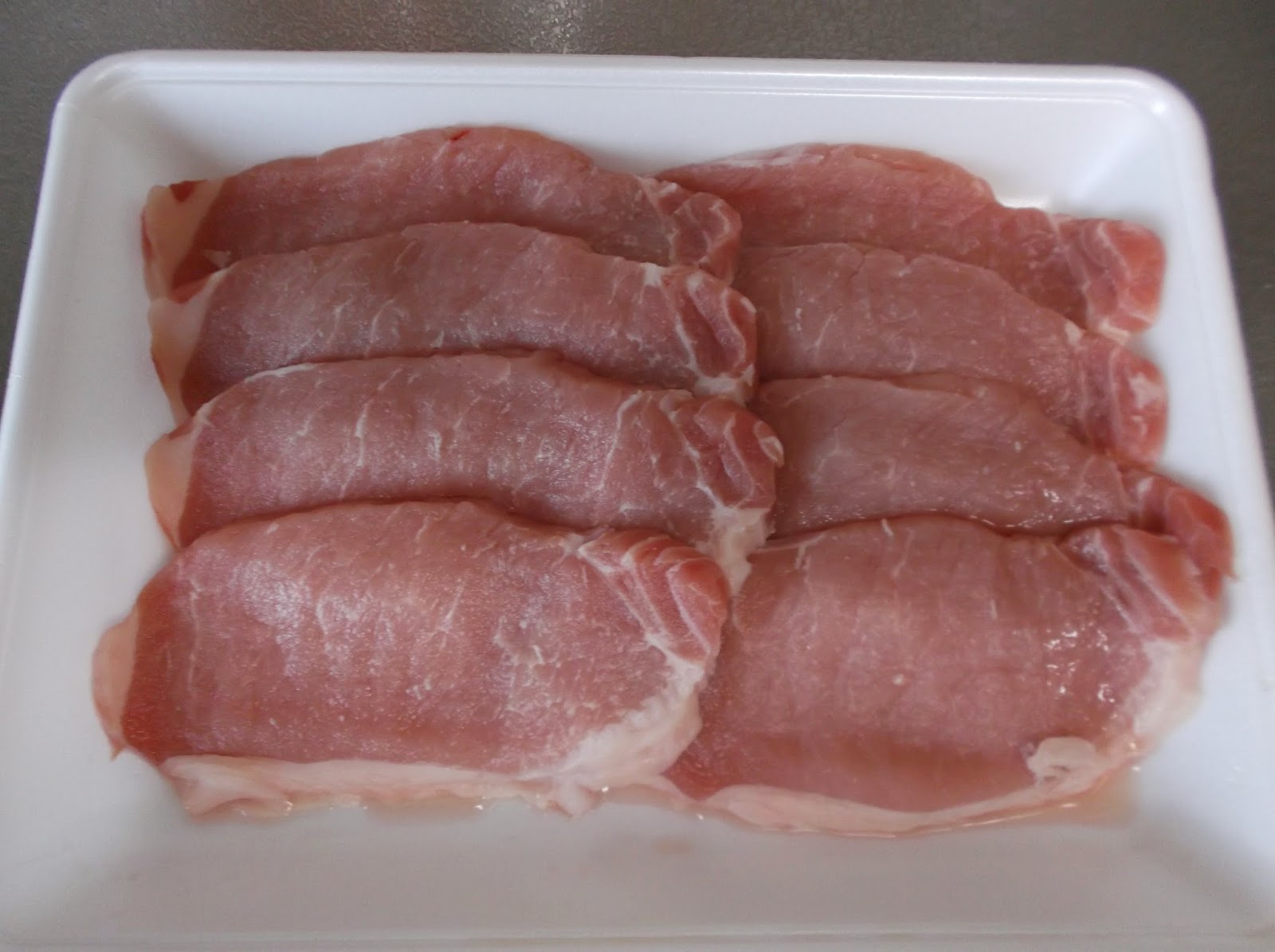As part of supper tonight, I made pork "rosu" (loin) tonkatsu, using these slices (about 500 g in total).
In Japan, there are two main types of tonkatu: rosu (loin) and hire (tender loin). Both are good, but I prefer hire tonkatsu (hire katsu for short) because hire is lower in fat.日本では、とんかつには主にロースとヒレという二種類があります。どちらも美味しいですが、私はヒレとんかつ(ヒレカツ)のほうが低脂肪なので、好きです。
Images of rosu tonkatsu/ロースとんかつの画像
Images of hire tonkatsu/ヒレ とんかつの画像
(These particular slices are more suitable for sautee because they are rather thin.)
(この切り身は薄いので、ソテーにするほうが適しています。)
I used one M size egg. I thought it wouldn't be enough for these eight slices, so I added some some flour and some water to extend it.
Mサイズの卵を一つ使いました。切り身8枚には少なすぎると思って、小麦粉と水を少し足し、延ばしました。
I deep-fried two slices at a time at 180C for about two and a half minutes.
180Cで2枚づつ、約2分半、揚げました。
I had mine with karashi (Japanese mustard), lemon juice, and chuunou (lit. medium thick) sauce.
私は、辛子(からし)、レモン果汁、中濃ソースで食べました。
And, of course, shredded cabbage!
もちろん、キャベツの千切りも、です。
The rosu katsu (short for rosu tonkatsu) was good, but I still prefer hire katsu (short for hire tonkatsu).
ロースかつは美味しかったですが、やはりヒレカツのほうが好きです。
Note: "Rosu" comes from the English word "roast". It refers to meat suitable for roasting.
注: 「ロース」は、英語の「ロースト」に由来します。ローストに適する肉という意味です。






2 comments:
Here we call the rosu "pork back cutlets" or when thinnly sliced "minute steaks". True the tenderloin is much more tasty but we like to eat both.
Reminds me to prepare some minute steaks with a breaded crumb parmesan cheese crust next week.
Kiki: I used to like rosu katsu when I was young because it was cheaper, bigger, and filling. Hire katsu is more expensive and smaller.
Breaded crumb parmesan cheese crust? That sounds delicious! I will make chichen katsu with cheese in it some day.
Post a Comment